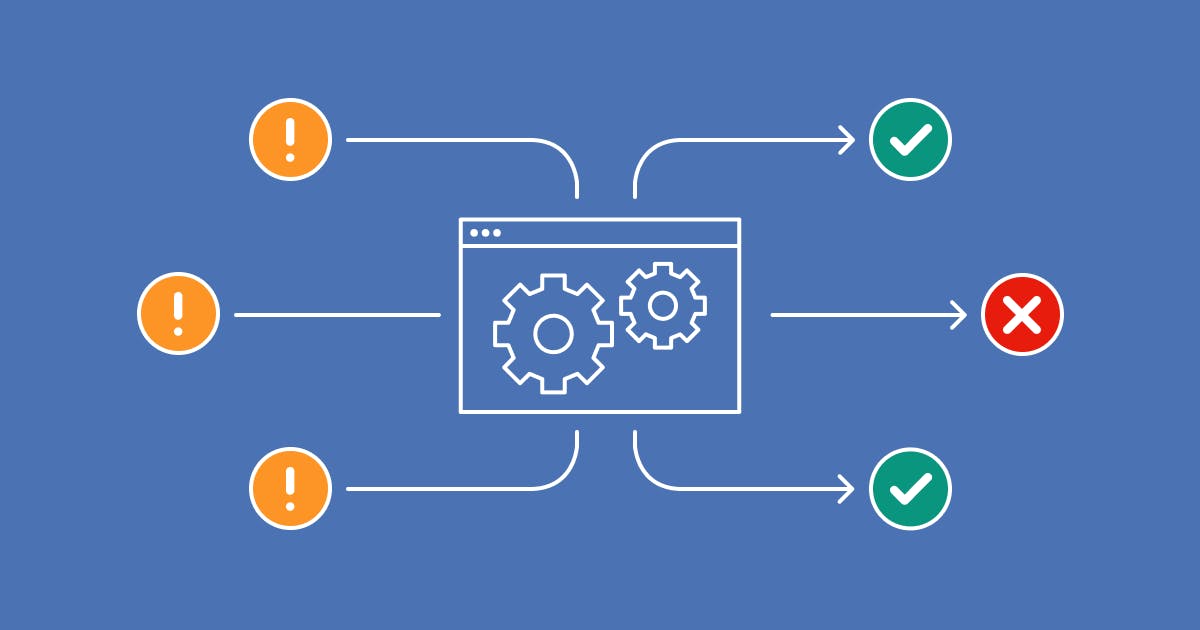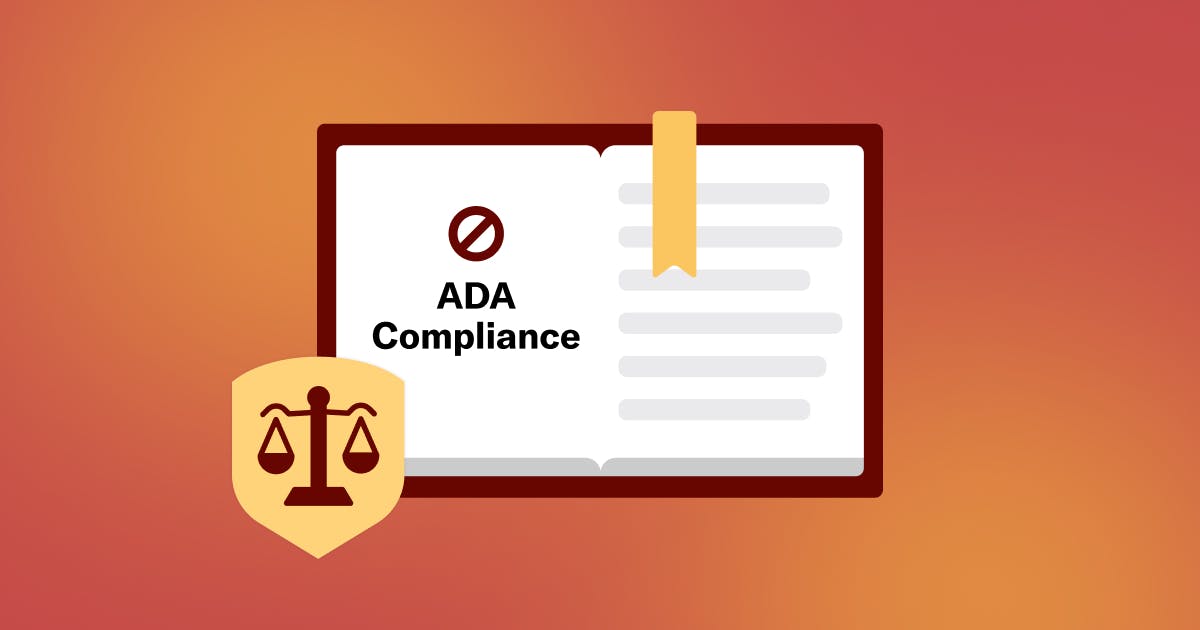10 Examples of Section 508-Compliant Websites
- What is Section 508 Compliance?
- 1. CivicPlus
- 2. Bureau of Internet Accessibility
- 3. Misericordia University
- 4. Mayville State Bank
- 5. City of Lubbock, TX
- 6. Grant County Health District
- 7. City of Aliso Viejo
- 8. Lackawanna County
- 9. The Ranch
- 10. City of Kodiak
- Test Your Digital Content for Section 508 Compliance with AudioEye
10 Examples of Section 508-Compliant Websites


Ready to see AudioEye in action?
Watch Demo
Government entities or those receiving federal assistance are required to comply with Section 508 and provide an accessible experience to individuals with disabilities. Check out these top ten examples of websites that are Section 508 compliant.
Compliance with Section 508 of the Rehabilitation Act is both necessary and challenging. If you’re a federal agency (or an organization that receives federal funding), you’re required to make your digital spaces accessible to all users, including individuals with disabilities.
But knowing where to start — or how to implement accessibility features without compromising design — can feel overwhelming. While accessibility laws lay out the requirements, translating those into a seamless, attractive user experience can be tricky — especially if your teams are juggling design, usability, and compliance all at once.
Here’s the good news: Creating a visually stunning website that complies with Section 508 is possible. Below, we’ll explore some of those sites that have achieved this balance and how you can do the same.
But before we jump into that, a quick review of what Section 508 compliance is.
What is Section 508 Compliance?
Under Section 508 of the Rehabilitation Act of 1973, all federal agencies must make their digital information and technology accessible to people with disabilities. The act applies to digital content such as websites, online documents, software, multimedia, and mobile apps. Essentially, if a federal agency (or any organization receiving federal funds) creates or uses digital content, that content must be accessible to people with disabilities.
For organizations to comply with Section 508, they must meet the accessibility standards outlined in the Web Content Accessibility Guidelines (WCAG) 2.1 Level AA. WCAG guidelines require content to be perceivable, operable, understandable, and robust to individuals with disabilities (more commonly known as the POUR principles). These principles are further broken down into three levels of conformance: Level A (lowest standard), Level AA, and Level AAA (highest standard). Federal agencies are required to meet all the success criteria outlined in Level AA to be considered Section 508 compliant.
By following these requirements, organizations create digital experiences that are accessible, inclusive, and functional for all users.
Examples of Section 508-Compliant Websites
With the accessibility requirements of Section 508 in mind, let’s look at ten websites that have created a visually stunning website that’s Section 508 compliant.

1. CivicPlus
CivicPlus is a technology company specializing in creating software solutions for government agencies. They’re dedicated to providing a one-stop, frictionless digital interactions that improve user satisfaction and help staff collaborate and work efficiently.
Their site seamlessly incorporates accessibility features, including intuitive keyboard navigation and consistent navigation features across pages. The use of red and white (a color combination that’s tricky to get right) strikes the perfect color contrast ratio, creating a crisp, clean look to their site without sacrificing readability. Additionally, CivicPlus provides an accessibility toolbar, allowing users to change features such as color contrast levels, text size, spacing, or focus indicators to meet their specific needs.

2. Bureau of Internet Accessibility
The Bureau of Internet Accessibility (BOIA) is an accessibility platform that features self-help accessibility tools, audits, training, remediation, and implementation support. Each of these tools is helping organizations break down digital barriers that prevent users from accessing digital spaces.
The clean, simple layout of the site allows for easy navigation and access to the company’s most important resources, making it great for assistive technology users. Additionally, BOIA’s site uses animations in an accessible way, each one stopping after a few seconds.

3. Misericordia University
Located in Pennsylvania, Misericordia University is a private Catholic school that offers a range of undergraduate, graduate, and certificate programs. The school is focused on providing an inclusive, service-oriented, and academically challenging environment.
The hero section of the homepage features a repeating video to give visitors a glimpse into their school and campus life. However, the video can be paused or resumed as needed to ensure it’s accessible. The site also features an accessibility toolbar that allows users to adjust the color contrast ratio or text size based on their individual needs.

4. Mayville State Bank
Mayville State Bank, located in Michigan, opened its doors in 1885 and has been providing exceptional bank services to the area ever since. The bank focuses strongly on the customer and provides a wide range of services, products, and solutions to meet their unique needs.
The bank’s website reflects its strong commitment to the customer with a site that is well-organized and accessible. It makes good use of colors, all of which are clear and distinctive on the page. Additionally, keyboard commands, descriptive links and calls-to-action, and consistent navigation options make the entire site easily navigable.

5. City of Lubbock, TX
Located in the northwest part of Texas, Lubbock is known for its deep roots in agriculture, thriving music scene, and the presence of Texas Tech University. It offers a unique blend of small-town charm and big-city amenities, with highlights including the Buddy Holly Center and the Depot Entertainment District.
The city’s website is well organized, presenting easily clickable buttons for common tasks such as applying for a job or paying a bill. The hero section includes a video of the area with smooth transitions and minimal animations, which minimizes distractions for users with cognitive disabilities. Additionally, links throughout the site are descriptive and well-written, reducing confusion and improving navigation.

6. Grant County Health District
The Grant County Health District (GCHD) was formed by the Grant County Commissioners in 1967. The organization strives to make Grant County a safer, healthier place to live, learn, work, and play. GCHD provides numerous services, including adult immunizations, food inspection services, septic system permitting and inspections, healthy eating and active living, and injury prevention.
The GCHD homepage includes large buttons with descriptive link text to streamline users' navigation. The navigation is consistent throughout the site, enabling users to easily navigate throughout the site with minimal confusion.

7. City of Aliso Viejo
Aliso Viejo is located in southern Orange County, California, and is well-known for its scenic hills, family-friendly neighborhoods, and proximity to the Pacific coast. One of Orange County’s newer cities, it offers a mix of residential, business, and recreational spaces and is home to beautiful parks, award-winning schools, and bustling shopping districts.
The city’s website uses vivid imagery of the town set against blue and green gradients throughout. The homepage includes quick links for faster navigation and descriptive text to improve readability for users. An accessibility toolbar is consistently featured in the bottom right-hand corner of the site so users can easily make accessibility adjustments as needed.

8. Lackawanna County
Lackawanna County, located in northeastern Pennsylvania, is known for its rich coal mining history and scenic landscapes in the Pocono Mountains region. The city features a unique blend of historic charm, parks, and outdoor activities, offering residents a mix of both urban and rural lifestyles.
Their website showcases the area's natural beauty with beautiful imagery of the hero and a distinctly visible title for easy readability. All colors have great color contrast, adding to the site's crisp, clean feeling. The site is also assistive technology and keyboard command friendly, making it easy for these users to navigate the site’s content.

9. The Ranch
The Ranch is a transformative wellness company designed to “reinvigorate the physical, mental, and spiritual health” of individuals. The facility offers services, including sustainability services such as plant-based meals and organic recycling, in a distraction-free environment.
The stunning visual elements of the header further promote the Ranch’s commitment to health and well-being. Every image is neat, simple, and well-designed, using color in a way that is visually appealing yet accessible. The header does not change automatically; rather, users have the ability to change the imagery as needed. The site’s additional animations are used sparingly and in a way that minimizes distractions.

10. City of Kodiak
Kodiak, Alaska, is a small, picturesque city located on Kodiak Island. It is well-known for its rugged landscapes, rich fishing industry, and diverse wildlife. The city also offers a distinct, remote charm and serves as a gateway to some of Alaska’s most pristine natural environments.
The city’s website features a simple, minimalistic homepage with easy access to whatever individuals are looking for. All buttons on the homepage include clear descriptions, helping visitors understand where they’ll be taken upon clicking on them. The menu includes the same icons featured on the homepage, keeping navigation consistent and eliminating confusion.
Test Your Digital Content for Section 508 Compliance with AudioEye
Keeping your website compliant with Section 508 doesn’t mean you need to sacrifice design elements. Each of the websites above has achieved that balance, creating beautiful online spaces that aren’t just accessible and inclusive but also compliant. Keeping accessibility features—such as sufficient color contrast, alt text, descriptive link text, and consistent navigation—in mind from the beginning can help streamline your path to compliance and create a positive experience for users.
To help you on the path to compliance (without sacrificing design), there’s AudioEye. The process starts with our free Web Accessibility Checker, which scans your digital content for 30 WCAG violations — more than any automated tool on the market. Our Automated Fixes automatically fix these violations, getting you one step closer to 508 compliance. To minimize your legal risk even further, AudioEye supplements our automated testing with audits from our team of human experts and individuals from the disability community. The team thoroughly audits your digital content to find more complex accessibility issues and provide recommendations for fixing them.
Alongside our Accessibility Platform, AudioEye’s Assurance provides up to 400% more legal protection than consulting or automation-only approaches. Plus, AudioEye features the lowest legal claim rate in the industry at just 17%, giving you peace of mind that your digital content is legally protected.
Ready to see exactly where your digital content stands on Section 508 compliance? Use our free Web Accessibility Checker to see how to make your content more accessible and inclusive.
Want to see AudioEye in action? Schedule a demo today.
Ready to see AudioEye in action?
Watch Demo
Ready to test your website for accessibility?
Share post
Topics:
Keep Reading

5 Best Accessibility Plugins and Where They Fall Short
Automation is an important tool in making your website accessible, but accessibility plugins, even the good ones like these, cannot ensure ADA compliance.
compliance
October 31, 2024

The Ultimate Checklist for AODA Compliance
Learn what the the Accessibility for Ontarians with Disabilities Act (AODA) is and which accessibility standards you need to meet using our comprehensive checklist.
compliance
October 18, 2024

Who is Exempt from ADA Compliance?
Most businesses aren’t eligible for ADA compliance exemptions. Here’s an overview of web accessibility requirements under Title III of the ADA.
compliance
October 16, 2024
